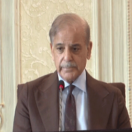By Ahsan Iqbal
Published in The News on November 02, 2022
Initiated in 2013 by the then prime minister Nawaz Sharif, the multi-billion-dollar China-Pakistan Economic Corridor (CPEC) was conceived and designed as the flagship project of the Chinese President Xi Jinping’s signature Belt and Road Initiative (BRI).
Aimed primarily at harnessing Pakistan’s important geo-strategic location into geo-economic gains through improved regional and economic integration, CPEC encompassed a full spectrum of projects ranging from physical and digital connectivity to power generation and promotion of industrialization through Special Economic Zones. After extensive research and consultations and deliberations between representatives of the Governments of China and Pakistan, a comprehensive portfolio of projects was identified for implementation under the early harvest phase (2018), short-term projects (2020), medium-term phase (2025), and long-term phase (2030).
Given the severe energy crisis faced by the country in 2013 – estimated to have imposed a cost of about two per cent of GDP annually on the economy – power generation projects under the IPP policy were prioritized for the early harvest phase of CPEC. By the end of the early harvest phase, over 5,000MW power had already been added to the national grid while another batch of projects with a cumulative capacity of nearly 2500MW was near completion under the aegis of CPEC. Similarly, six major infrastructure projects were either completed or near completion by the end of 2018, including the Multan-Sukkur Motorway (392 kms), the Havelian-Thakot section of KKH (120 kms), Hoshab-Sorab road N-85 (449 kms; financed through PSDP), Hakla- DI Khan motorway (297 kms; financed through PSDP), Orange Line Metro train (27 kms), and cross-border optical fiber from Khunjerab to Rawalpindi (820 kms).
The total investment made in the completed and under-implementation projects stood around $22-23 billion approximately. This massive influx of Chinese investment on the one hand boosted economic growth and helped bridge critical gaps in power, digital and physical infrastructure and aroused the interest of investors from other countries in Pakistan on the other hand.
However, unfortunately just as the PML-N government managed to steer the country out of the economic crisis and put it on the track of inclusive growth, a wave of political instability hit the country, posing a threat to the hard-won economic stability achieved with the help of CPEC. The challenge to CPEC was compounded as the PTI-led government assumed power in 2018. The multi-billion-dollar initiative lost steam under the PTI, thanks to the latter’s poor understanding and weak management of CPEC.
Members of the PTI-led cabinet publicly spewed baseless allegations and propaganda with regard to CPEC projects. As if the latter was not enough, the inter-governmental and inter-provincial coordination mechanisms established and institutionalized over the course of the preceding five years were needlessly rolled back with the creation of a parallel body in the form of the ‘CPEC Authority’. These ill-advised steps not only affected the pace of under-implementation of CPEC projects but also undermined the confidence of existing and prospective Chinese investors. The outcome was that progress on existing projects slowed down and not even a single new project could be implemented under CPEC between 2018 and 2022.
Ever since coming into power, the current government has made herculean efforts to not only revive CPEC but also expand the scope of cooperation to include other critical areas such water resources management and climate change, mining, agriculture, and business-to-business investments in the energy and industrial sectors. In the 11th meeting of the Joint Cooperation Committee held on Thursday, the two governments have agreed in principle to revive CPEC, expand areas of cooperation and augment/complement the strong foundation laid by government-to-government cooperation with business-to-business linkages.
The official announcements of some of the major initiatives are likely to be made in the upcoming first official visit of the Prime Minister Shehbaz Sharif to China.
We are expecting the signing of formal financing agreements of the strategic infrastructure projects of ML-1 and Karachi Circular Railway (KCR). Similarly, the government of Pakistan is also actively encouraging Chinese investors to participate in the investment opportunity offered by the recently announced initiative of generation of 10,000MW solar power.
Furthermore, the two governments have also agreed to deepen cooperation in the industrial sector through expedition of work on the development of priority SEZs and development of institutional linkages between Pakistani SEZs and Chinese SEZs, companies and local governments. Lastly, the government of Pakistan has also taken a number of measures to ensure foolproof security to Chinese personnel working in Pakistan. The security of Chinese personnel working in Pakistan is a top priority for the government.
In addition to reviving CPEC and expanding areas of cooperation, the government has also made dedicated efforts to address the genuine socio-economic issues faced by the residents of Gwadar. The prime minister of Pakistan is personally spearheading efforts to ensure the provision of safe drinking water and electricity to the people of Gwadar. The prime minister has also issued directions for making 0.5 million additional households from Balochistan beneficiaries of BISP, including the entire poor population of Gwadar district.
Similarly, special measures have been taken in collaboration with the government of Balochistan to address the long-standing valid concerns of fishermen of Gwadar with regards to deep-sea trawling. The government of China has also generously agreed to implement grant-funded projects worth RMB200 million for the socio-economic development of people of Gwadar. The afore-mentioned measures will ensure that CPEC spurs equitable growth and generates wider benefits for the local people.
Managing complex and strategic projects like CPEC requires not only a well-coordinated, mature and transparent approach but also administrative and policy continuity and political stability. Our government is determined to deliver all these.





